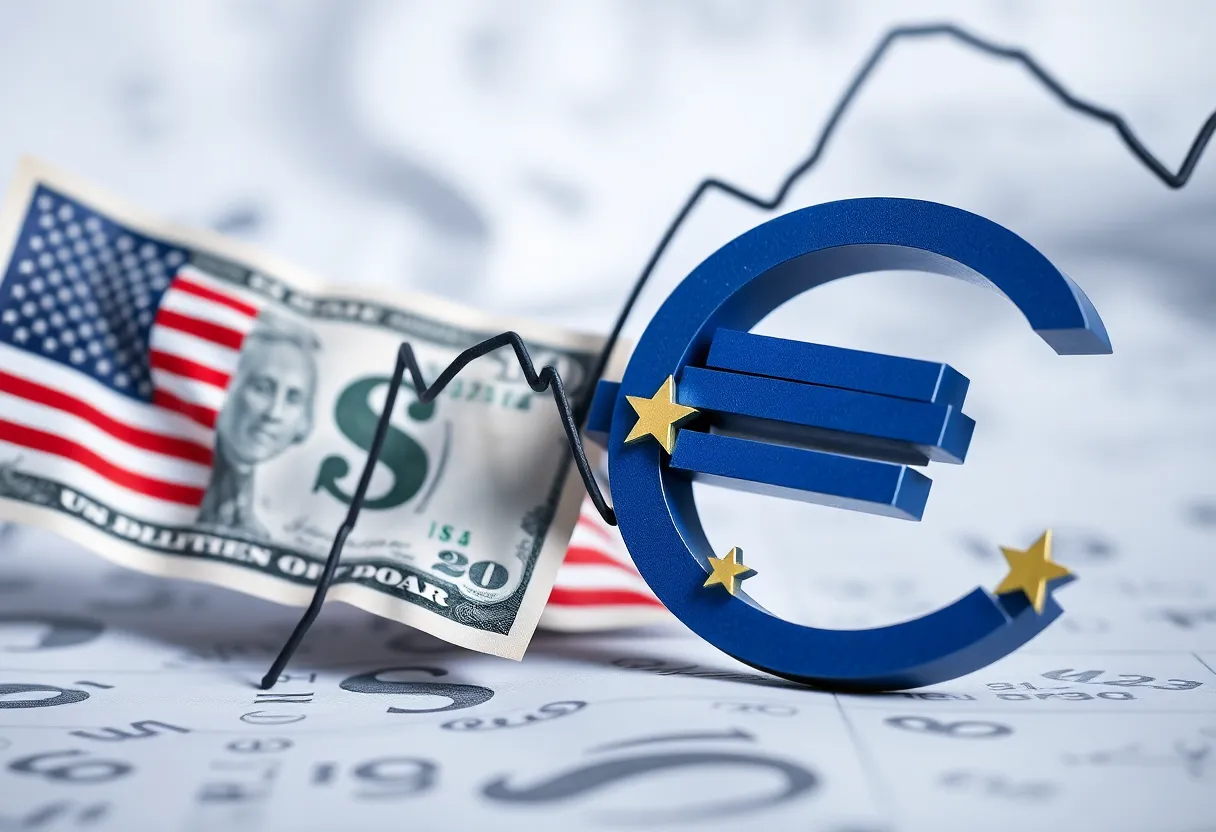News Summary
The U.S. dollar has reached a three-year low, declining for five consecutive days amidst economic shifts and growing skepticism over U.S. policies. The currency has weakened by 8% this year, influenced by new tariffs that are affecting investor confidence. Analysts warn that this downward trend could impact U.S. stocks and bonds, with implications for the dollar’s status as a global reserve currency. As the euro gains strength, uncertainty looms over the dollar’s future and its implications for the economy. Investors are left reconsidering their strategies in light of increased market volatility.
Dollar Dips Further as Turbulence Rattles Investors
New York City – The U.S. dollar is having a rough time lately, plummeting to a three-year low amid shifting economic winds and policy changes. The dollar has now fallen for five consecutive days, and the dollar index, which measures its strength against a basket of other currencies like the euro, yen, pound, Canadian dollar, Swedish krona, and Swiss franc, is sending alarm bells ringing across financial markets.
What’s Happening with the Dollar?
This year has not been kind to the greenback. It has decreased in value by about 8%, a trend that really kicked into high gear following recent announcements regarding tariffs on imports from nearly all corners of the globe. These tariffs are intended to promote American-made products by placing additional costs on imported goods. Ironically, this has also driven down the value of the dollar against multiple currencies, including the euro and the yen, making imports more expensive for everyday Americans.
Shifting Investor Confidence
As news of the tariffs spread, investor confidence began to dwindle. Initially, there was a general belief that these policies would boost the dollar by lessening the demand for foreign currencies. However, the reality has turned out to be significantly different. The scale and impact of the tariffs were much greater than many financial analysts had anticipated.
Concerns are escalating as recent patterns show that when the dollar weakens, U.S. stocks and bonds also tend to take a hit. This unusual trend has left analysts scratching their heads, with some labeling it as “rare, ugly, and worrying.” Historically, the dollar has served as a “safe haven” during times of market volatility, but its current trajectory seems anything but secure.
The Global Sentiment Shift
Many analysts are suggesting that this decline in the dollar could reflect a growing skepticism among international investors toward U.S. economic policies. The threat of increasing national debt and aggressive tariff measures could be prompting foreign investors to look elsewhere. This sentiment shift has the potential to impede the U.S. government’s fiscal capabilities moving forward.
Alarm bells are ringing at institutions like Deutsche Bank, where some experts have pointed out that foreign investors appear to be losing interest in holding dollars. Capital Economics even raised the possibility that the dollar’s status as a global reserve currency could be slipping, creating a ripple of uncertainty concerning its long-term future.
Unexpected Consequences of Tariffs
Interestingly, the very tariffs meant to help cool an overheating economy could ultimately be backfiring. Instead of strengthening the dollar by encouraging domestic production, they seem to be denting investor confidence in U.S. assets. This has stirred fears about the future viability of U.S. Treasury bonds, which have also taken a hit as the dollar weakens.
What’s Next for the Dollar?
Changing Tides
Deeper Dive: News & Info About This Topic
- The New York Times: Dollar Dips Due to Trump Tariffs
- The Washington Post: Analysis on Dollar and Tariffs
- Business Insider: US Dollar Weakness Amid Tariff Concerns
- CNBC: Dollar Plunge and Euro Surge Explained
- Detroit Free Press: Impact of Trump Tariffs on the Dollar
- Wikipedia: United States Dollar
- Google Search: US Dollar Tariffs
- Google Scholar: US Dollar Economic Policy
- Encyclopedia Britannica: United States Dollar
- Google News: US Dollar Tariffs








